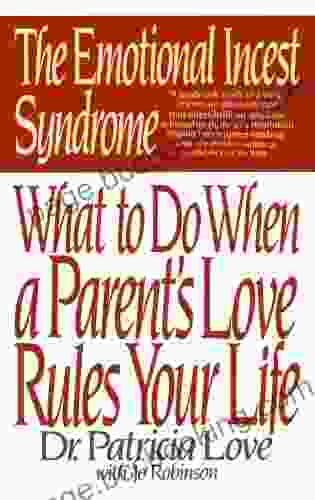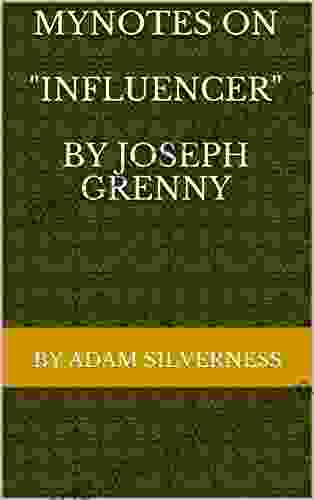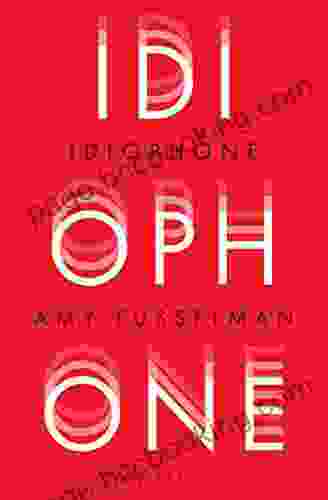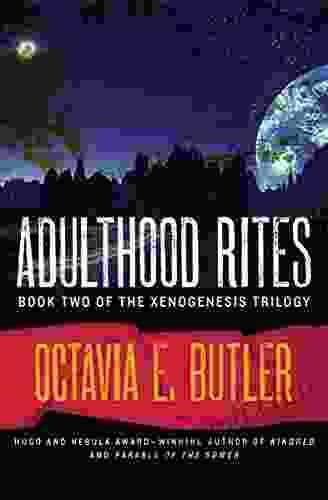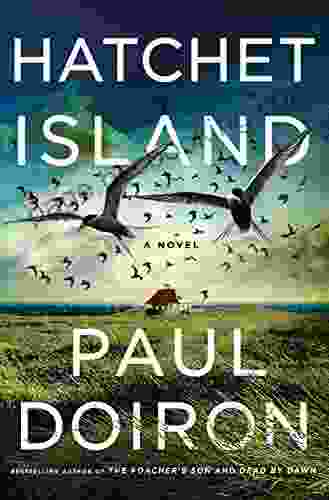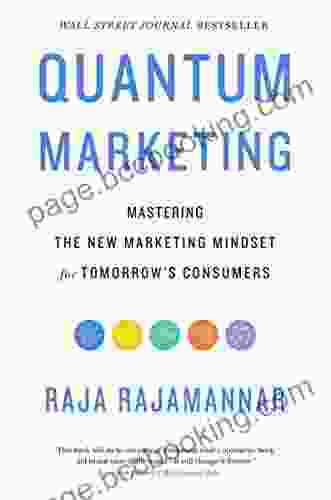The Emotional Incest Syndrome: Breaking the Silent Epidemic

4.6 out of 5
| Language | : | English |
| File size | : | 2861 KB |
| Text-to-Speech | : | Enabled |
| Screen Reader | : | Supported |
| Enhanced typesetting | : | Enabled |
| Word Wise | : | Enabled |
| Print length | : | 302 pages |
| X-Ray for textbooks | : | Enabled |
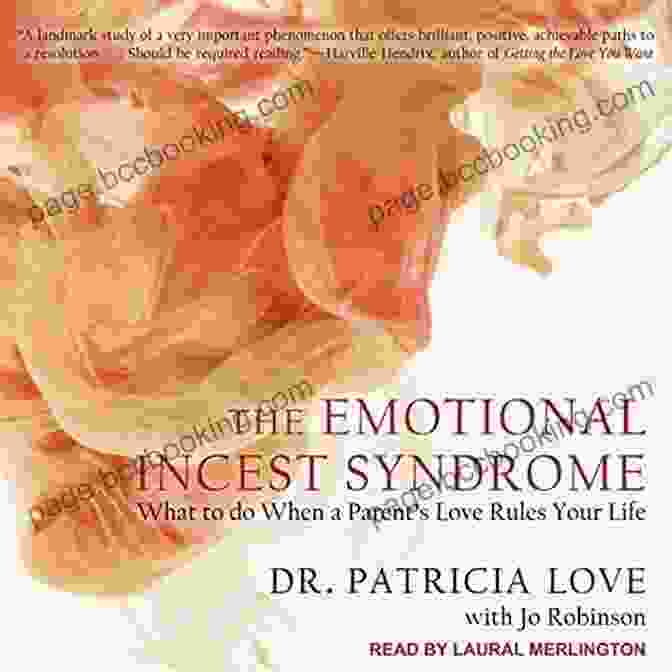
Unveiling the Hidden Epidemic
Emotional incest, a term coined by psychotherapist Patricia Love, refers to a subtle and insidious form of abuse that occurs when a parent or caregiver engages in emotionally inappropriate and sexually suggestive behaviors with a child. Unlike physical incest, emotional incest involves no physical contact but can be equally damaging, leaving lasting scars on the child's psychological and emotional development.
This phenomenon, often hidden beneath a veneer of love and affection, is estimated to affect an alarming number of individuals, creating a silent epidemic that has profound consequences for both the victims and society as a whole.
Symptoms and Consequences
Emotional incest typically manifests through a range of behaviors, including:
- Emotional enmeshment: The parent or caregiver treats the child as an emotional confidant or surrogate partner, sharing intimate details and seeking emotional support from the child.
- Boundary violations: The parent or caregiver disregards the child's personal space and boundaries, invading their privacy and controlling their choices.
- Sexualized behavior: The parent or caregiver engages in behaviors that are inappropriate for the child's age and developmental stage, such as making suggestive comments or exposing the child to inappropriate sexual content.
- Emotional manipulation: The parent or caregiver uses emotional pressure or guilt to control the child's behavior, making them feel responsible for the parent's happiness or well-being.
The consequences of emotional incest can be far-reaching and debilitating, affecting the victim's self-esteem, relationships, and overall psychological health. Victims may experience:
- Low self-worth and a sense of shame
- Difficulty forming healthy intimate relationships
- Ongoing feelings of guilt and responsibility
- Depression, anxiety, and other mental health issues
- Substance abuse and self-destructive behaviors
Breaking the Cycle
Breaking the cycle of emotional incest requires a multipronged approach that involves:
- Recognition and acknowledgment: The first step is for the victim to recognize and acknowledge the abuse they have experienced.
- Setting boundaries: The victim needs to establish clear and healthy boundaries with the abusive parent or caregiver.
- Therapy and support: Professional therapy is essential for healing from the trauma of emotional incest. A therapist can provide a safe and supportive environment for the victim to process their experiences.
- Self-care and self-love: Victims of emotional incest need to prioritize self-care and practice self-love to heal and rebuild their self-esteem.
- Breaking the generational cycle: Victims of emotional incest must strive to break the cycle of abuse by creating healthy and nurturing family relationships for themselves and future generations.
Emotional incest is a serious issue that can have devastating effects on the lives of victims. By understanding the symptoms, consequences, and pathways to healing, we can shed light on this hidden epidemic and empower individuals to break the cycle of abuse.
The journey to healing from emotional incest is not an easy one, but it is possible. With the right support, victims can overcome the trauma of their past and forge a brighter future for themselves.
If you believe you or someone you know may be experiencing emotional incest, it is important to seek professional help immediately.
4.6 out of 5
| Language | : | English |
| File size | : | 2861 KB |
| Text-to-Speech | : | Enabled |
| Screen Reader | : | Supported |
| Enhanced typesetting | : | Enabled |
| Word Wise | : | Enabled |
| Print length | : | 302 pages |
| X-Ray for textbooks | : | Enabled |
Do you want to contribute by writing guest posts on this blog?
Please contact us and send us a resume of previous articles that you have written.
 Book
Book Novel
Novel Page
Page Chapter
Chapter Text
Text Story
Story Genre
Genre Reader
Reader Library
Library Paperback
Paperback E-book
E-book Magazine
Magazine Newspaper
Newspaper Paragraph
Paragraph Sentence
Sentence Bookmark
Bookmark Shelf
Shelf Glossary
Glossary Bibliography
Bibliography Foreword
Foreword Preface
Preface Synopsis
Synopsis Annotation
Annotation Footnote
Footnote Manuscript
Manuscript Scroll
Scroll Codex
Codex Tome
Tome Bestseller
Bestseller Classics
Classics Library card
Library card Narrative
Narrative Biography
Biography Autobiography
Autobiography Memoir
Memoir Reference
Reference Encyclopedia
Encyclopedia Sharon Ward
Sharon Ward Pamela Fuller
Pamela Fuller Patrick Pickens
Patrick Pickens Sriman Sharma
Sriman Sharma Sue Wieger
Sue Wieger Ray T Malbrough
Ray T Malbrough Rick Brandon
Rick Brandon Nilakantasrinivasan J Neil
Nilakantasrinivasan J Neil Parvati Sharma
Parvati Sharma Robb Wallace
Robb Wallace Sally Bjornsen
Sally Bjornsen Vincent Rocca
Vincent Rocca Robert Pondiscio
Robert Pondiscio Ron Osajima
Ron Osajima Peter Ustinov
Peter Ustinov Paola Pugliatti
Paola Pugliatti Rachel Ruiz
Rachel Ruiz Philippa Ballantine
Philippa Ballantine Sophia Rolle
Sophia Rolle Ryan Johnston
Ryan Johnston
Light bulbAdvertise smarter! Our strategic ad space ensures maximum exposure. Reserve your spot today!

 Willie BlairThe Story of Odysseus As Told by His Loyal Dog: A Tail-Wagging Tale of Epic...
Willie BlairThe Story of Odysseus As Told by His Loyal Dog: A Tail-Wagging Tale of Epic... Jason HayesFollow ·12.9k
Jason HayesFollow ·12.9k Ethan MitchellFollow ·14.8k
Ethan MitchellFollow ·14.8k Paulo CoelhoFollow ·4k
Paulo CoelhoFollow ·4k Devin CoxFollow ·12k
Devin CoxFollow ·12k Norman ButlerFollow ·5.5k
Norman ButlerFollow ·5.5k Gordon CoxFollow ·3.5k
Gordon CoxFollow ·3.5k Deacon BellFollow ·15.5k
Deacon BellFollow ·15.5k Jeremy CookFollow ·5.2k
Jeremy CookFollow ·5.2k
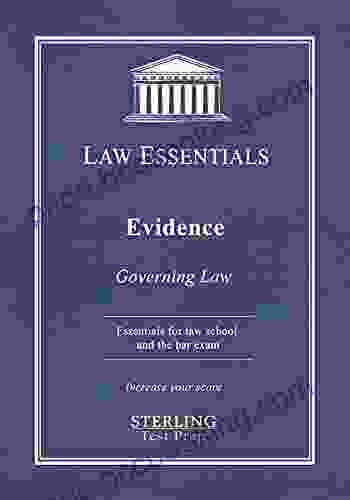
 Marvin Hayes
Marvin HayesGoverning Law for Law School and Bar Exam Prep: Your...
Unlock the Secrets of...
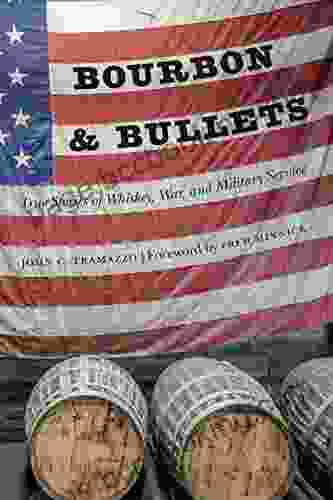
 Sidney Cox
Sidney CoxUnveiling the Epic Tales of Whiskey, War, and Military...
In the tapestry of history,...
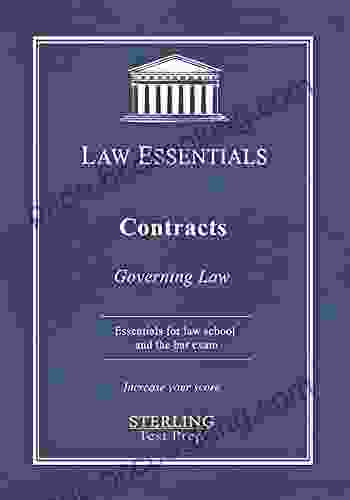
 Victor Turner
Victor TurnerGoverning Law for Law School and Bar Exam Prep: The...
What is Governing...

 Robert Browning
Robert BrowningSterling Test Prep MCAT General Chemistry Practice...
: Embark on Your MCAT General Chemistry...
4.6 out of 5
| Language | : | English |
| File size | : | 2861 KB |
| Text-to-Speech | : | Enabled |
| Screen Reader | : | Supported |
| Enhanced typesetting | : | Enabled |
| Word Wise | : | Enabled |
| Print length | : | 302 pages |
| X-Ray for textbooks | : | Enabled |


